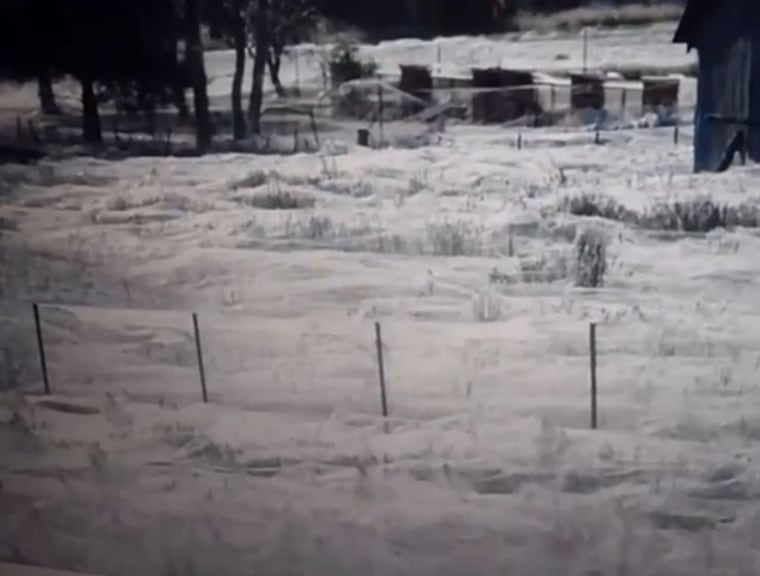A story that went viral this week about spider webs blanketing an Australian city is not entirely accurate.
What the spiders were doing was creating a line of silk, not webs, an entomologist has told Discovery News. The arachnid at the root of the story, a wolf spider, doesn't even make webs.
PHOTOS: Golden Spider Silk Makes Rare Cloth
So, what these images show are massive amounts of dragline silk released by the normally solitary spiders as they ran for their lives to escape rising floodwaters. According to Reuters, flooding forced more than 8,000 human residents from their homes in the city of Wagga Wagga, New South Wales.
And the spider residents were equally affected too.
“Wolf spiders would rather be hiding somewhere, trying to escape birds and other predators, but when land gets so flooded the spiders are forced to flee into trees and other high things,” Steve Heydon, senior museum scientist at the Bohart Museum of Entomology, University of California at Davis, told Discovery News.
“These spiders leave behind a dragline of silk, so the spiders at these places in Australia must be nervously running into each other, marching around in search of food,” he added. “There is clearly a lot of spider activity, as evidenced by the massive amounts of silk.”
Owen Seeman, an arachnid expert at Queensland Museum, identified the spider in question as “a type of wolf spider.” These are common spiders throughout the world, with 130 species documented in Australia alone.
Wolf spiders do not make webs, which many other spiders use to capture prey.
“Wolf spiders are instead like mini tigers that run and pounce on prey at night,” Heydon said.
In some of the news stories about the Australian spider silk “storm,” at least one expert, the Australian Museum’s entomology collections manager Graham Milledge, has been quoted as saying that the spiders were “ballooning.” Andy Reynolds, a scientist at Rothamsted Research, has studied this phenomenon before.
Reynolds explained that spiders “could use ballooning to cover long distances.” Each spider casts a thread of silk into the breeze and rides wind currents away from danger or parachutes into new areas.
Reynolds said the silk “can contort and twist with turbulence, affecting its aerodynamic properties and carrying its rider unpredictable distances.”
Heydon believes it is possible that some of the images showing the spider silk after the Australian flood could indeed be evidence of ballooning. But for wolf spiders, he said, this happens more often among younger, smaller individuals.
“Ballooning is a useful technique in the spider toolkit,” he said. “Some spiders can go to the end of a blade of grass or other starting point and release silk into the air so much that wind lifts it and carries the spider off.”
NEWS: Why Spiders Will Always Find You
Spiders “balloon” all across the United States, but many of us probably miss the activity. Heydon, however, notices it all of the time, and even at his university’s sporting events.
“At night, if you look at the big lights in our athletic fields, you can sometimes see long streamers of silk from ballooning spiders flying high into the air,” he explained.
Clearly certain parts of Australia are inundated with such spiders, resulting in the dramatic photos showing everything from a farm to a family dog covered in spider silk after the flood.
Weather reports say the floodwaters in Wagga Wagga are receding, so both people and the spiders should soon be returning back to their homes and normal routines. Wolf spiders eat mosquitoes and other insect vectors, so they can be very beneficial to people and to the ecosystem.
Heydon said that if you go hiking, “You can put a flashlight on your head and shine it in a grassy area. If wolf spiders are around, you can often see their beady little eyes reflected in the light.”
